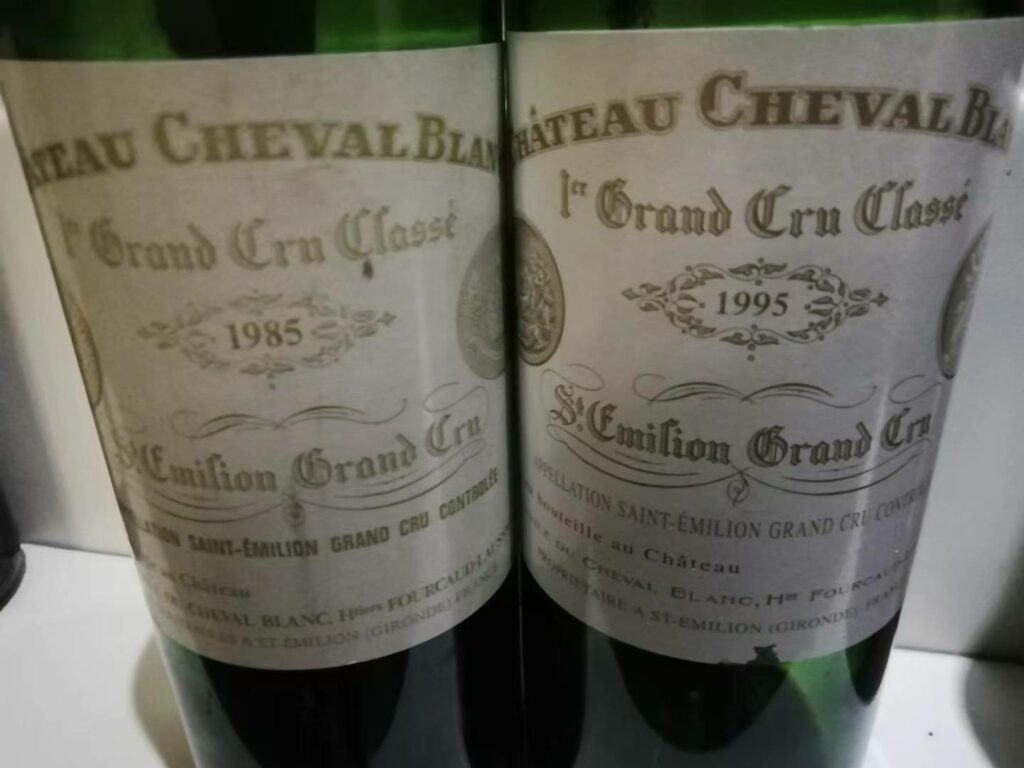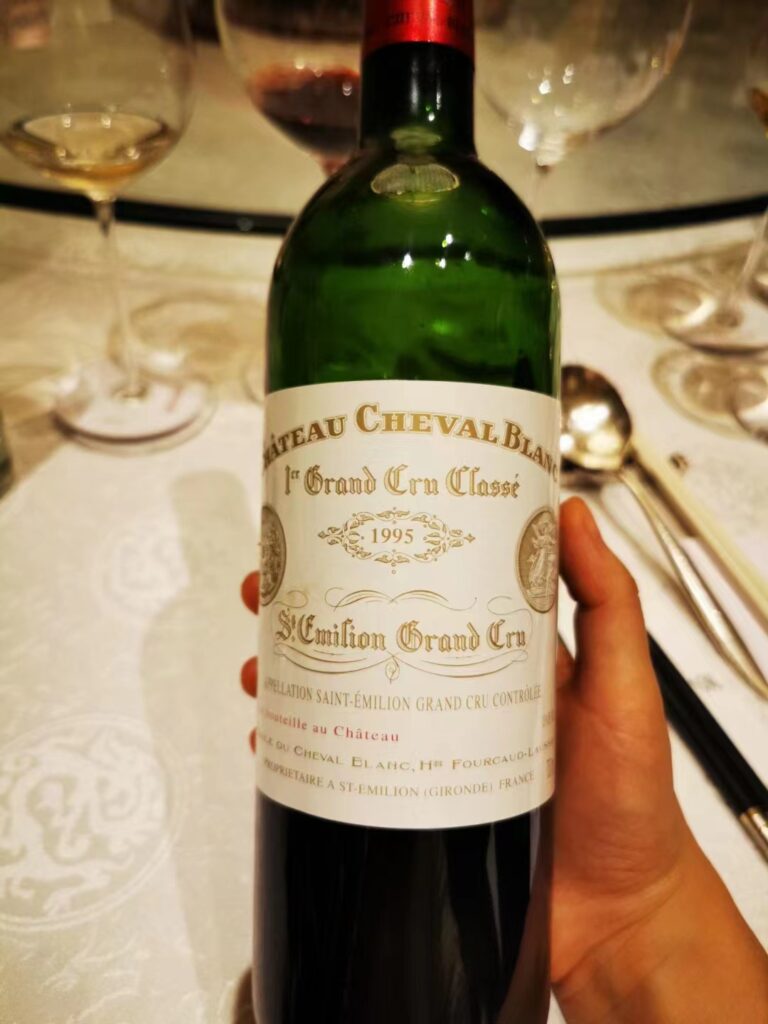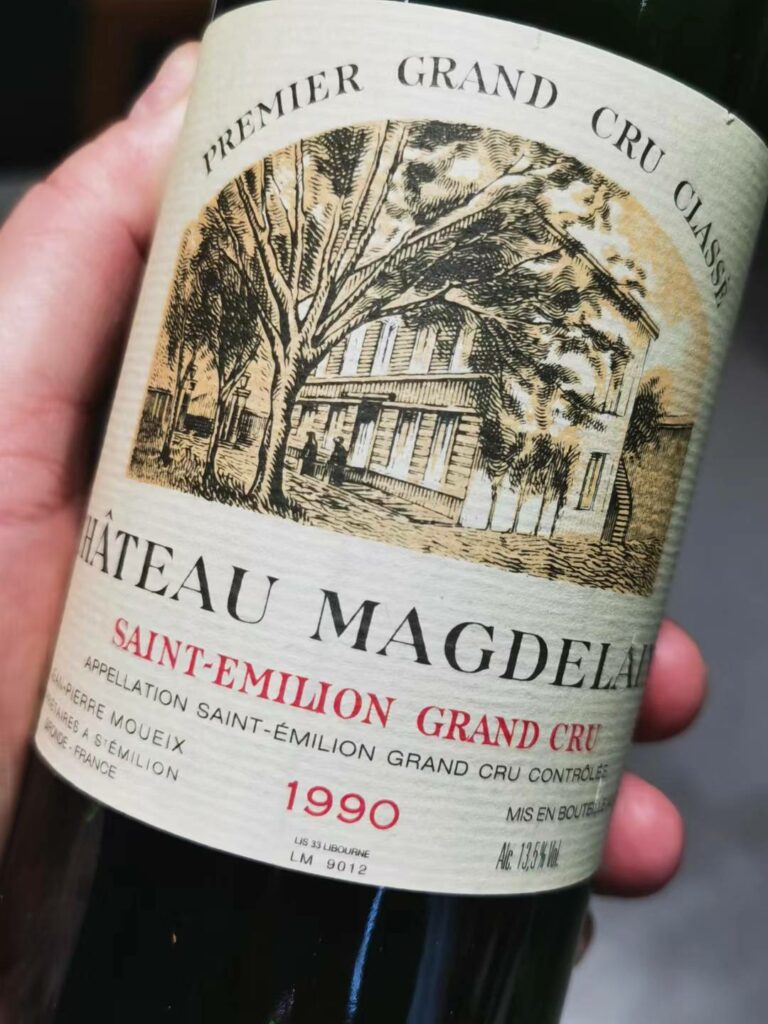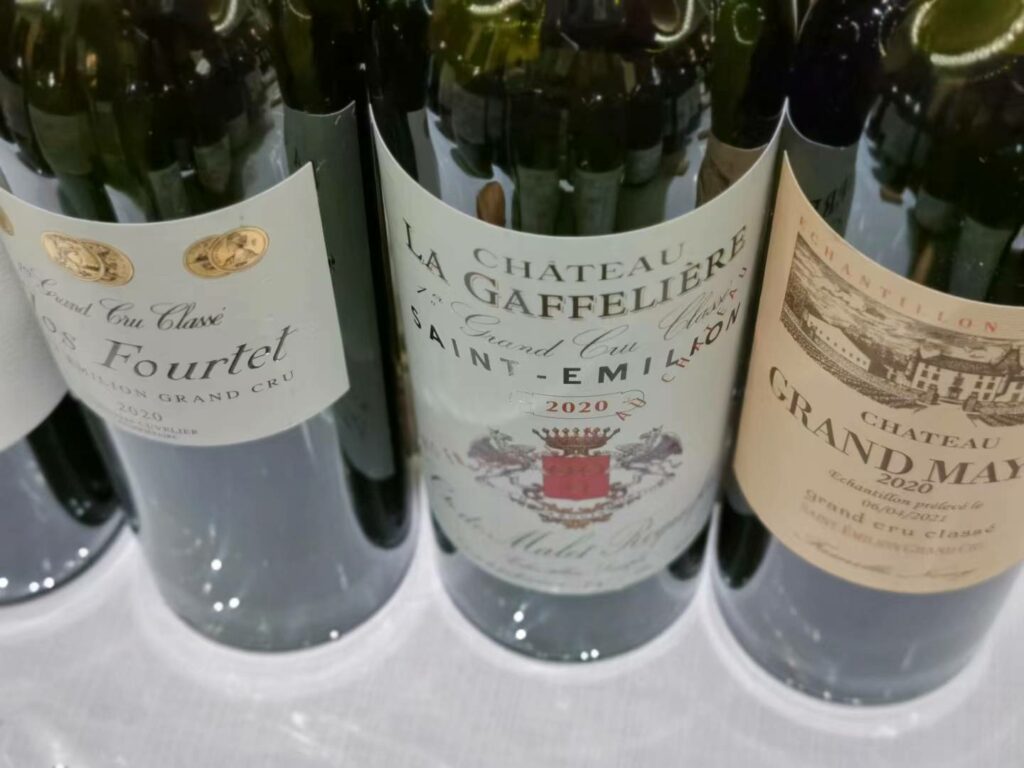In his brilliant short piece published here on the TerroirSense Wine Review back on July 28, 2021 titled: “Robert Millman: The Problem with Classifications – Part 1”, Millman analyzed in his usual acute and erudite way the problem with wine classifications. He based his initial musings on the Saint-Émilion classification, one that has fallen on increasingly hard times of late.

It is well-known by most wine lovers that recently the two best and most famous (by far, and that applies on both counts) Châteaux of Saint-Émilion withdrew from the Appellation’s classification that is renewed every ten years (a renewal that was to take place again in 2022). The classification calls for a new evaluation process every ten years, so as to allow evaluation and best of recognition on those properties that have worked well and improved their product in the interim. Millman brilliantly points out the down side to this when he writes: “… regular re-examination of the wines: The Chateaux try to read the tea leaves, as it were, of what is regarded at that specific point in time as excellence on the part of the judges and the public”. He further underlined what the two most famous Saint-Émilion estates had to say in explaining their decision: “…In 2012 (the last classification re-evaluation), we noticed a profound change in the philosophy of the classification, especially regarding new criteria that amount to “marketing drift”, such as the importance of product placement, how often an estate appears in media, including PR and in social media, along with wine tourism infrastructure.” Admittedly, hardly much of that, nothing really, has to do with terroir.
Fact is, are people even clear about Saint-Emilion’s terroir and what makes its best wines truly special? Or are we to accept that anyone armed with spinning cones and inverse osmosis technology, or maybe a garage, can just about make the most concentrated wine possible even if the soil his or her vineyards are planted on is more suited to growing potatoes? (Which is not to imply of course that potatoes don’t have terroir, because clearly, they do: it’s just that it’s probably not the most ideal terroir for grapevines.) For example: do we agree that limestone is tantamount to producing high quality wines? Well, the French certainly seem to think that, and will tell you so at just about every turn of your spit in the bucket. And so if we agree to agree on that one simple fact, then finding out and knowing where the limestone is in Saint-Émilion is probably good intelligence to have in order not just to evaluate wines, but to understand them, even. Clearly, it might not be that wines blessed with hearts of limestone are necessarily always the best of the Appellation; others made in other sections of the Appellation’s hallowed ground may be just as good, just different. For example, some of the Appellation’s grandest wines, of the world really, are made on more gravel-rich soils of the Appellation’s western reaches; and so, greatness does not necessarily just lie in the limestone. But once again: comparing similarly competently made wines from mostly gravel, mostly clay, and mostly limestone soils will reveal wines of noteworthy diversity (at the very least, you would expect to find it) but that might all be equally as good and/or interesting. Or not. Wines that are bound to be different from those born off heavily fertile, alluvial soils.
For it is the information relative to soil and subsoil that more than any other hocus pocus and mumbo jumbo will tell you a great deal of what you really need to know about the potential quality of the wines that can be made at each site. Clearly, given similar producer competence (which is asking for a lot, I know). I for one do believe that a property’s quality, and the quality of its wines, is based largely on its terroir; and of the various human and physical parameters that make up “terroir”, the soil in which the grapes are grown is to me the single most important factor of them all. Admittedly that sort of statement makes some people squirm in discomfort, when not quiver in rage because you can’t really change terroir. So soils and subsoil can be pretty damning. And so, it’s not at all convenient when people start talking about what your soil is really like; so much better to talk about other stuff. But the facts remain the facts: relative to Saint-Émilion, a very good example of this is given by the 1999 vintage, when almost 20% of the harvest there was wiped out by hail. Clearly, not every estate in Saint-Émilion suffered hail-related damage to the same extent: knowing which areas got wiped out more than others goes a long way in telling you all you need to know about the quality of the site were those grapes are (and in this specific case, you might say were) grown. If you aren’t armed with such information, or just fail to be aware of its importance, then you are hopelessly at the mercy of the marketing hype associated with some well-heeled and media-savvy wineries.
The importance of site: soil and climate
Relative to geology, we all speak of minerality in wines and we also know exactly what we mean when we use that term, though the exact scientific meaning of “minerality” in wines is far from clear and/or determined. For sure, soil characteristics are all-important in the genesis of the wines we drink: not just soil composition, but also soil texture, drainage, water regimen, pH, grapevine root architecture, and nutrients (all of which are greatly influenced by the geology of site, meaning the types of rocks and bedrock) influence the way grapevines grow and ultimately, the wines we drink. Should you be interested in this topic, and wish to understand more about it, I have written extensively on the subject in my Italy’s Native Wine Grape Terroirs (University of California Press, 2019) that though about Italian grape varieties and their respective best terroirs, addresses the concept and reality of terroir at length (in the first part of the book).
In fact, as I pointed out with the example of the 1999 vintage in Saint-Émilion, it’s not even a matter of just soil and subsoil. It is all too often forgotten that the best sites are those that have not just top-quality soil/subsoil but also top-quality meso- and micro-climates. In essence, that what a “cru” is. A cru is, by definition, a site that gives above average wines distinct from those of other sites and that reflect that site’s characteristics year in and year out (to varying degrees) independently of vintage. In other words, though in some vintages characteristic of site may be more apparent than in others, to an extent the wines will, or should be, always recognizable as coming from that specific site. Otherwise, we can hardly speak of a “cru”. It follows that the best sites, the best terroirs, are those that not just have the best soils but also the best meso- and micro-climates. It’s those properties that do not have these realities to fall back on that have to talk up other points in their favour. You can hardly blame them.
Saint-Emilion’s terroir and quality of site
If you are into reading scientific journals and books as much as I am, then you know that according to Peel and associates (2007), Saint-Émilion’s climate is classified as ‘Cfb’ in the Köppen classification, or in simpler terms, as temperate oceanic. The summers are moderately warm (mean annual temperature of 13.8 degrees Celsius) and relatively dry (mean rainfall of 944 mm per year. I write “relatively” because barometric diagrams demonstrate how the rainfall is distributed throughout the year with no noteworthy dry summertime periods. By contrast, winters are rainy but mild [data from the Mérignac meteorological station, Météo France, 1981–2010]. However, as anyone who visits Bordeaux regularly knows, weather variability throughout the year is rather high and consequently, besides making sure you pack an umbrella when you do go and visit, it is just as useful to know that there is a marked weather-related vintage effect on the wines (if you don’t think so, swell: then you won’t mind if I take off your hands all your 1998 Saint-Émilion grand crus classés and give you these very fine 2002s and 2003s in exchange? And may the deities smile on you, forever blessing you -and all of us- with a very long life full of good health, because we all need you).
The geology of the Saint-Émilion appellation has been mapped by the French Geological and Mining Research Agency and has been the subject of many extremely detailed and useful studies, most notably by Cornelius Van Leeuwen, one of my terroir and Bordeaux heroes (and perhaps just maybe slightly more importantly, also winemaker at Château Cheval Blanc). Van Leeuwen’s 1989 map indicated how Saint-Émilion’s soil diversity could be classified by geomorphic zones. If you are into cambisols, luvisols and stagnosols as much as I am, then this is the work for you (I actually have not one but two posters made up of this map and they follow me everywhere, and I mean everywhere, whenever I move homes). In any case, the soil classification proposed by Van Leeuwen was transformed into a World Reference Base (WRB) classification: the WRB classification is a two-tier system of soil classification, with thirty-two Major Soil Groups (the so-called ‘Reference Base’, with each identified by specific names) and over 120 uniquely defined descriptors of, and for, each specific soil characteristics (IUSS Working Group WRB, 2015).
Broadly speaking, in the general neck of the Bordeaux woods where Saint-Émilion just happens to be located, there is a long ridge or crest of nonmarine conglomerate, sandstone, and shale produced from the erosion of mountains and deposited in rivers and lakes (more simply known as a molasse) topped by limestone runoffs. This structure starts more or less at Sainte-Foy in the east and reaches out to Blaye (and the Charente-Maritime) in the west. And though there may be valleys here and there interrupting the topographic and landscape flow, (such as in the case with Côtes de Castillon), Saint-Émilion and its satellites (Saint-Georges, Montagne, Puisseguin and Lussac) are located on this molasse and characterized, to greater and lesser degrees, by a certain geological and topographical uniformity. For the most part, the topography of Saint-Emilion area is slightly hilly with plateaus and hillsides, and this explains why the French often speak of Saint Emilion’s terroir in terms of plateau, côtes, and pieds de côtes.
But the soil and subsoil of Saint-Émilion proper is a very complex one, and differs to more or less noteworthy degrees not just from its immediate surrounding areas such as those of the satellites, but within the Appellation itself. And while the Appellation’s defining soil characteristic is the presence of limestone of many different types, it is not so cut and dried. In general terms, the plateau is characterized by calcareous-clays and red and brown clays resting on Asteria limestone (a very hard limestone often used as a source of building blocks). The côtes are characterized by soils that are clay-calcareous and resting on the Frontsadais molasse and a more tender limestone, and the pieds de côtes are marked by the presence of soils rich in sand and clay-loam on remodeled molasses. Clearly, it is the limestone that is the defining feature (or not) of the Saint-Émilion terroir: the best known of these limestones is the previously mentioned Asteria limestone, which is covered by tertiary sediments and is at the core of the famous Saint-Émilion plateau. Over the centuries, the plateau was modeled by the Dordogne, Isle, and Barbanne rivers, and the presence of these rivers help explain why not just the limestones of Saint-Émilion differ, but the rocks present within the soil do too. I this respect, you will notice that while in Saint-Émilion these are often jagged and angular, there are rounded ones too (actually more typical of the Médoc). The difference in rock shape is the result of the former being fragments of the underlying bedrock, while the latter rounded ones are mostly of fluvial origin (derived from the Pyrenees mountains in the Médoc and from the three aforementioned rivers on the right bank).
In Saint-Émilion, soils vary greatly from area to area within the Appellation, and even from vineyard to vineyard. In essence, and simplifying greatly, we can break down the Saint-Émilion Appellation in three main soil/subsoil types: the limestone plateau; the gravel-rich western area that spreads out towards and reaches the Pomerol border; and the cooler clay-rich eastern section. More to the south lies an alluvial plain, formed essentially by the Dordogne river during the Quaternary period and that is associated with alluvial sediments (mostly sands and scarce gravel terraces) that relative to wines of world-class quality, only those most interested in finding something good to say at all costs about a soil will be able to find much merit in.
The limestone plateau itself is instead located to the north, the center and the west of the pretty medieval town and this is where Saint-Émilion heavyweights such as Château Ausone, Ausone, Beauséjour Héritiers Duffau-Lagarosse, Belair-Monange, Berliquet, Canon, Clos Fourtet, Pavie, Pavie-Macquin, Soutard, and Troplong-Mondot, own all or part of their vines. It an area characterized by limestone, clay, gravel, sand and loam with iron deposits. Variations in altitude are more prevalent here than elsewhere in the Appellation, such that the area’s drainage and soil fertility, not to mention microclimate, are all affected to a degree. There are actually three different sub-sections to this section of the Appellation: the highest section is the marliest, the middle section features deeper more fertile soil, and the lower slope which is warmer and perhaps best for the later-ripening Cabernet Franc. Clearly it is those like Ausone that fish off all three sections that can make potentially the best and/or most complex wines. As already mentioned, there are numerous types of limestone in Saint-Émilion; and while the best-known is the very hard asteries limestone that gives wines that are extremely refined, floral and citrussy, there are also softer limestone formations that give appropriately more tender wines. At the bottom of the slope gradients, mixtures of clay, loam, sand and limestone dominate, with the percentage of loam and clay increasing. It follows that not just the limestone differs, but the clays too, for example. Janus-like, clays can have two personalities: fine-grained entities of a lamellar nature that can be asphyxiating for vine roots (and therefore highly detrimental) or saviors in times of drought, by holding on to and releasing water when it is needed. Not only is the structure of clays important, but their fertility too: in this light, the cationic exchange concentration (or CEC) is an important parameter by which to characterize clays (once again, my Italy’s Native Wine Grape Terroirs broaches this at length).
Towards the west, the soil/subsoil of Saint-Émilion changes greatly. This area is closer to Pomerol, and in fact for many experts it is more appropriate to consider it as part of Pomerol. For various reasons, it was not meant to be. The area is in fact a direct continuation of Pomerol’s higher plateau but one that has progressively less clay (the presence of which is extremely typical of some parts of Pomerol) and more sand and gravel. This part of the Saint-Émilion area is pretty flat, with little in the way of slope gradient: in turn, this means that water-related problems in the area can be very real, either as the result of too much water (because of poor drainage -and in fact this is an area where many properties have laid down kilometers of underground pipes over the decades in an effort to improve on this soil aspect) or too little water in times of drought (due to poor water-retentive capacity of the gravel-rich and rather clay-challenged soils). The best-known wines from this part of Pomerol, ooooops, pardon me, I meant to write Saint-Émilion, are those of Château Cheval Blanc and Figeac. And by the way, of Château Lafleur’s too, which is just a good stone’s throw away -you might say literally- across the border over in Pomerol. I point out that while at Figeac Cabernet Sauvignon has always found a welcoming home, the combination of climate change and gravel has led some properties on Bordeaux’s right bank to plant Cabernet Sauvignon, though in my humble view to plant anything but Cabernet Franc in Saint-Émilion is tantamount to a crime against humanity. All joking aside, it bears pointing out that, after all, a wine like that of Château Cheval Blanc at over 50% Cabernet Franc in most vintages (save for a brief and very sorry spell around the turn of the new century when Merlot-top heavy wines were being attempted…guess why?) is possible only here. Cheval Blanc is simply one of the world’s five or six greatest red wines of all, and if it is so it is in large part because of its unique Cabernet Franc presence. The presence of gravel in this section of the Appellation is very obvious (just think of the soil at Château Figeac), but there is also clay, limestone and fine-grained sand with soil iron deposits larger here than elsewhere in the Appellation (the presence of soil iron in this section of Saint-Émilion does not surprise and is actually consistent with and reminiscent of the iron of Pomerol’s crasse de fer, further establishing a link between this part of Saint-Émilion and Pomerol).
The third section of the Appellation is located to the east: this eastern side of Saint-Émilion is a much the cooler terroir, with higher percentages of soil clay. Here is where you find estates such as the Châteaux of Fleur Cardinale, Larcis-Ducasse, Pressac, Tertre-Roteboeuf, and Valandraud. All those names have become famous to various degrees over the last few decades, thought there can be no doubt that Tertre-Roteboeuf is the true shining star of this part of the Appellation, no doubt by way of owner’s Francois Mitjaville’s outstanding talent and passion (just witness what marvellous results he achieves at Château Roc de Cambes in Bordeaux’s Côtes de Bourg).
In ultimate analysis, Saint-Émilion’s soil structure is far more complex than what I have just described, but I hope to have contributed to a better general understanding of the Appellation’s reality. After all, there is so much more than just wine, in a glass of wine.
The wines in the tasting
The wines in this specific tasting were chosen with the goal to highlight differences in terroirs relative also to their vintages. In other words, we purposely chose not to write about just the great and the famous or universally well-regarded vintages, but also very difficult ones too such as 1992 and 2003 to showcase what great terroirs can accomplish even in weather-challenged times. This does not mean that we score every more or less important label that comes our way 95 and above as is far too commonly done nowadays, but rather place the wine in its correct context, that of its vintage and of the estate’s history. And so no, you will not find any 2003 Bordeaux scored 100 points score here, because even taking into account that there is no accounting for personal preferences, we are in fact all accountable. For there are clear-cut guidelines to determining taste. Good taste, actually.
Château Cheval Blanc 1948 Saint-Émilion 100
The 1947 Cheval Blanc is universally considered one of the ten greatest red wines ever made, and I’m not going to argue with you, because it really is a spectacular wine. That much admitted, I really believe that the ’47 Cheval Blanc to be a one-of-a-kind wine that is more a benchmark of the vintage than it is of Cheval Blanc. The 1948 and 1949 wines are in fact just as good but for me at least speak more of the estate and its wines as I know and think of them.
Delicate pale red-ruby with a hint of garnet at the rim. Lovely floral nuances top the highly perfumed, precise aromas of cassis, lead pencil, spearmint, minerals and red cherry. Then juicy, intense and sharply delineated, with lovely lift to the extremely pure flavours of red and dark berries, cinnamon, faded violet, minerals and cedar. Silky-sweet wine with lovely olfactory persistence, this just glides ballerina-like on your palate while delivering a mouthful of precision and elegance that will remain indelibly etched into your brain cells. This is now the third time I have had this specific wine and I have never scored it anything but 100 points, the only wine I can say that about. Drinking window: 2022-2032.
Château Magdelaine 1961 Saint-Émilion 100
Bright, full red-ruby with a trace of orange at the rim, but this is still impressively youthful in colour. Nuanced, scented nose combines raspberry, blackcurrant, tobacco, leather, cedar, violet and a peppery nuance. Suave, juicy and complex, with harmonious limestone-derived acidity giving shape and freshness to the wine’s very concentrated dark cherry, cassis, tobacco and mocha flavours. The close is very long, precise and powerful, but the tannins are remarkably smooth. The 1961 Magdelaine is to me is one of the great but most underrated wines of Bordeaux. Drinking window: 2022-2035.
Château Cheval Blanc 2010 Saint-Émilion 100
In what is one of the best Cabernet Franc vintages of all time for Bordeaux’s right bank, Cheval Blanc could not be anything but amazing. And in fact, the 2010 Château Cheval Blanc is one of the great modern-day wines made at the property and arguably one of the best wines Cheval Blanc has ever made. Bright red-ruby. Cigars, crème de cassis, violet, cinnamon, vanilla, and minerals explode from the glass. Full-bodied, deep and concentrated, with mesmerizingly pure and precise flavours of raspberry, red cherry nectar, blackcurrant juice, vanilla, cinnamon, candied violet, graphite and minerals, that are nicely framed by mouthwatering acidity. This boast a fabulous multilayered quality that is just unforgettable. Closes with satiny, ultra-fine tannins and lingering purity. A simply phenomenal wine that is an essence of what great Cabernet Franc is all about (there was about 55-57% Cabernet Franc in the final blend). Drinking window: 2022-2065.
Château Ausone 2005 Saint-Émilion 99
Luminous inky-ruby colour. Perfumed, complex and very deep aromas of minerals, violet, blueberry coulis, cassis, violet and cedar on the knockout, still somewhat brooding nose. Then complex and ultralayered in the mouth too, a truly palate-saturating wine, with memorably concentrated but utterly pure flavours of dark plum, cocoa, blueberry pie, and minerals lingering for what seems like hours. Maybe I’m being ungenerous not to score this 100 points, but the 2005 Ausone really is an amazing wine. Drinking window: now-2065.
Château Béausejour- Duffau Lagarosse 2009 Saint-Émilion 98

Good full ruby-red. Blackcurrants, candied violet, graphite, black truffles, blackberry jam and incense dominate the profound nose. Then intense and rich in the mouth with the 2009 vintage’s typical round fleshy and soft personality but at the same time perfectly balanced, with a massive, mouthcoating quality to the ultra-ripe flavours of , and a huge finish. This blend of 77% Merlot, 19% Cabernet Franc, and 4% Cabernet Sauvignon boasts building tannins of remarkable polish and an extravagantly fruity, dense finish. I’m not scoring it 100 points only because it has a touch of excess alcohol clout on the back end, but if you take care not to serve this too warm, or just chill it just so slightly prior to serving, I guarantee you nobody will ever notice. Drinking window: 2022-2055.
Le Dôme 2010 Saint-Émilion 97
Vibrant red-ruby. Utterly pure aromas of raspberry, vanilla, blueberry syrup, violets, white chocolate and nutmeg on the remarkably perfumed nose. Full-bodied, but remarkably light on its feet and boasting extraordinary purity and richness to its floral flavours of red and blue fruits, graphite, and fresh flowers nicely framed by a mineral edge. Weightless yet powerful, with velvety tannins and a long, gorgeous Cabernet Franc-dominated finish (save for a few2 100% Cabernet Franc wines made, at 80% this is the wine that boasts the greatest percentage of Cab Franc of any Bordeaux). Drinking window: now-2050.
Château Pavie 1955 Saint-Émilion 97
Bright pale ruby. Perfumed aromas and flavours of red berries, orange peel, cedar, tobacco leaf, and wild violet. Magically smooth and vibrant on the long midweight, mineral- and tobacco-accented finish. What you see and what you get: it’s a wine that starts out great from the first pour and stays just as great well into the evening, something that is not always the case with old wines. This is a beauty that is still holding up nicely after all these years. Drinking window: now-2050.
Château Cheval Blanc 1985 Saint-Émilion 95

Bright medium-dark ruby-red. Red and dark berries, milk chocolate, tobacco leaf, cigar box, prunes, raisins and orange peel on the forward, open-knit nose. Then open-knit in the mouth too in the typical 1985 red Bordeaux sort of way, with hints of cardamom, cumin, cinnamon, sandalwood, dried lavender and faded roses complicated by hints of leather and porcini. Medium-bodied, suave and silky, this is a remarkably exotic, floral, sweetly spicy Cheval Blanc that is simply irresistible. Importantly, there is no hint of game or funk in this wine that I have noticed in a few other bottles I have tried over the years, but it’s a finding that is present only some of the time and this bottle was devoid of it. Pierre Lurton once told me that the hints of earthiness, even of game, were suggestive of a dry year, and yet the right bank was blessed with more liquid refreshment than the left bank in that vintage. Go figure. Anyhow, this is one of the best, if not probably the best bottle of 1985 Cheval Blanc I have ever tried. Drinking window: now-2040.
Château Figeac 1990 Saint-Émilion 95
Deep ruby; actually, this has always struck me as always having been a darker than usual Figeac, and it still is to some extent, to this day. Licorice, figs and cassis on the nose and in the mouth, but nicely complemented by tobacco ash, flint and graphite on the very Cabernets-dominated profile. Medium-bodied and very polished on the long, smooth finish that boasts noteworthy clarity and cut. Closes long and firm, with outstanding persistence. Vey pretty wine that showcases well how the gravel and the Cabernets combined in what was a hot vintage to give something special. Beautiful wine. Drinking window: now-2040.
Clos Fourtet 2020 Saint-Émilion 95
Bright ruby-purple. Magically perfumed, with clean, deep aromas of raspberry, blueberry and flowers are complemented by truffle, cocoa and bright violet lift. Deep and very dense, with a suave, silky flavours of blackberry, cedar and graphite nicely framed by gorgeously polished tannins. The 2020 Clos Fourtet Saint-Émilion is a blend of 90% Merlot, 7% Cabernet Sauvignon, and 3% Cabernet Franc that will go down as one of the property’s great wines. Drinking window: 2027-2040
Château Cheval Blanc 1995 Saint-Émilion 94

Good full red-ruby. Beautifully perfumed, complex and multifaceted on the nose, offering red plums, raspberry, mocha and truffles on the knockout nose that entices even further with prolonged aeration. Intense flavours of red plums, red cherries and dark cocoa have a strong mineral bent. The fatertatse is long and pure, featuring silky tannins and very good balance. A
50% Cabernet Franc and 50% Merlot blend, this wine provides an excellent example, if any more were needed, of just how much better the ‘95 vintage was on Bordeaux’s right bank compared to the left. Drinking window: now-2040.
Château Magdelaine 1990 Saint-Émilion 94

Medium garnet-red. Still after all these years, the red cherry, vanilla, cinnamon, toasted nuts, tobacco leaf, and faded violet aromas and flavours boast noteworthy freshness and precisions. Smooth as silk, this closes in an almost showy, opulent way for Magdelaine with exotic notes of Oriental spices and tobacco. An outstanding Magdelaine that has aged nicely but that I would now drink up sooner rather than later. Drinking window: 2022-2028.
Château Cheval Blanc 2011 Saint-Émilion 93
Luminous red-ruby. Herbal and truffle nuances complicate dark fruits, cocoa and cedar on the nose and in the mouth. Raspberries and redcurrant flavours are cool and crisp, but the palate is slightly marred by the vintage’s tough tannins, though there’s plenty of underlying fresh lift to leave an impression of balance on the long close that offers echoes of flowers, white pepper and red berries. Medium to full-bodied, this rather taut and muscular red will never be defined by anyone as charming, but it will prove a very fine accompaniment to meat and game dishes. The large percentage of Cabernet Franc here (roughly around 55%) helps give this a refined quality, but decant it well ahead of when your libations with it are planned for. Drinking window: 2022-2040.
Château Ausone 2011 Saint-Émilion 92
Deep purple-ruby with a hint of a pale rim. Aromas of cassis, blackberry, licorice and minerals are heavily marked by an earthy, truffled and herbal overlay. Juicy and tightly wound but also pliant, with smooth black fruit and licorice flavors complicated by leather and dried herbs. A muscular wine that finishes with still firm tannins and excellent length. A 55% Cabernet Franc and 45% Merlot blend that is just a bit musty-herbal for my taste, but others who rpefer taut muscular wines might like it more. Drinking window: 2022-2040.
Château Ausone 2003 Saint-Émilion 92
Purple tinges to the deep ruby colour. Aromas of violet, blackberry, truffle, blueberry and sweet spices. Full-bodied with intensely ripe flavours of fruit (blackberry, blueberry and strawberry) but with noteworthy refinement for the year. Grilled nut nuances linger on the rich powerfully tannic, tough finish. Limestone soils or no limestone soils, it was just plain hard to make something avoiding grittiness in 2003. But still, this wine is successful enough that it showcases the importance of having the right terroir in a year marked by temperature extremes. While it’s not my idea of a 100 points wine, it is a remarkable achievement in a year when people in France were dying from the extreme heat. Drinking window: 2022-2040.
Château La Gaffelière 2020 Saint-Émilion 92

Medium ruby. Forward, lively aromas of black cherry, lavender, licorice, herbs and coffee. Then silky and politely-styled, with savoury dark fruit and spice nuances to the dark and red berry flavours. Closes medium-long with saline nuances of black olives and soy sauce. A very pretty wine. Drinking window: 2026-2037.
Château Grand-Mayne 2020 Saint-Émilion 91+
Vibrant inky-ruby. Powerful and pungent aromas and flavours of dark fruit, leather, minerals, tobacco, cloves and herbs. Very tannic still, with a grippy middle and close that will need time to resolve. If things smoothen out nicely, this will prove a gorgeous wine and my score will prove ungenerous, hence the plus sign. Drinking window: 2028-2038.
Château Figeac 1992 Saint-Émilion 91
Full red-ruby. Blackcurrant, violet, espresso and cloves on the nose. At once savory and sweet, with outstanding focus and energy for the year, with sappy black fruit flavours and a pretty, floral, long sweet finish that is pure and not particularly tannic. Thierry Manoncourt managed the property from 1947 and did an outstanding job (he passed away in 2010). This wine in a cool rainy year, showcases what a great, well-draining terroir can allow one to accomplish in difficult vintages. Well-done here. Drinking window: now-2028.

 中文
中文




When I think of the many other reviews of the wines of St. Emilion (and elsewhere) I realize that they offer descriptions without proper foundations: ie., Real knowledge and understanding of each properties’s situation and terroir. Most such reviewing istTherefore, in effect, opinion mongering and high point assigning. Maybe these august ladies and gentleman should have to take a terroir-test before be entitled to reviewing the wines in question. Ian D’Agata’s essay should be required reading for the point -dispensers
I concur
Glad we are on the same page! More articles simialr to this one coming up!
ian
Thanks Robert, you are much too kind!
ian
Ian,
A fascinating piece.
If I go to the starting premise of your article it seems that the issue of classification revolves around the dilemma of terroir (call it the POTENTIAL to make good or great wine) versus winemaking skill/willingness to invest (ACTUALLY making good or great wines).
Focusing on Bordeaux, you have the left bank where classifications have remained unchanged (Mouton excepted) for almost 125 years. Since then you have properties like Pontet Canet and Lynch Bages who have arguably hit above their weight class while others with higher classifications have produced mediocre wines.
It seems that St. Emilion is at least theoretically on the right track when they try to reassess whether wines continue to deserve the classification that they were given many years ago. What I think is very much open to debate is whether the criteria that St. Emilion are using are ideal (and I do think that terroir should have an important role to play in the evaluation) but I also think that the exit of certain high profile wines is a commercial decision – they either don’t want more wines to be classified as their “equal” or they disagree with being demoted.
Cheers!
Ciao Bruce,
wht can i say? An extremely erudite and insightful series of observations. For my readers who do not know Bruce, he is one of the biggest and more knowledgeable Bordeaux-lovers around.
I couldn’t agree more with everything you say in your letter. For sure, the idea behind renewing the classification every so many years so that it is not set in stone or in hibernation is valid, the problem as you point out is in the criteria that have been adopted to ascertain whether the wines are worthy of a different level of classification or not. i think that is also what Ausone and Cheval Blanc were unhappy about and contributed to their wanting to exit the classification. Thanks dor your comment, cheers!
ian
When I was a student pilot, the flight theory textbook was titled: “From the ground up” .
Way to go Ian, unpack the complexity of the scientific literature for us Cru lovers, we are here for that!
In parting, your picture of Cheval 1995 reminds me of my days as Butler/Somm in 2009 when I opened (and tasted) 2 dozens of them,
that was a wine moment for sure… (I think I kept 15 corks as a souvenir with the idea of nailing them on the wall and genuflect every time I pass by).
In Vino Veritas!
Well, that would certainly make a great artwork to hang on the wall, lucky you! But then again, someone with your vast experience and tasting ability in wine matters must have plenty of such great “paintings” to hang up on the walls…I fear you would run out of space! Cheers ian
The pleasure is all mine, really. Gld you enjoyed it and so I trust you’ll be happy with the upcoming Q&A interviews with Masi, Brigaldara, Tommasi and Tenuta Sant’Antionio. Cheers.